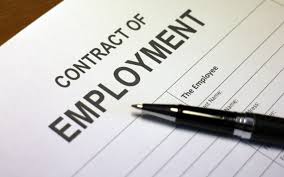Drafting Employment Agreements That Protect Employers
Hiring your first employee is a significant milestone for any business. It marks the beginning of growth and expansion, but it also introduces new responsibilities and potential risks. One of the most crucial steps in this process is drafting a comprehensive employment agreement that clearly defines the roles, responsibilities, confidentiality obligations, and termination terms. Such an agreement is not merely a formality; it acts as a protective shield for employers, helping to prevent disputes and costly litigation that can jeopardize years of hard work.
In this extensive article, provided by Legal Marketplace CONSULTANT, we will delve into the intricacies of drafting employment agreements. We will cover key components that every employer must include, legal considerations, best practices, and how to ensure that your agreements are enforceable and aligned with current laws as of 2025. Whether you are an entrepreneur taking the first step in hiring or an established business revising your contracts, this guide is indispensable.
The Importance of Employment Agreements
An employment agreement is a legally binding contract between an employer and an employee outlining the terms and conditions of employment. It serves as a roadmap for both parties, clarifying expectations and providing a framework for addressing potential issues. Without such an agreement, employers risk ambiguity that can lead to misunderstandings, grievances, and disputes.
Fostering clear communication through written agreements helps in establishing trust and professionalism. It also provides legal recourse in case of breaches, protecting the employer’s business interests and intellectual property. Considering the investment involved in hiring—recruitment, training, and development—the employment agreement safeguards this investment.
Key Components of an Employment Agreement
To draft a robust employment agreement that shields the employer, it is imperative to carefully include these essential components:
- Job Title and Description: Clearly define the role and responsibilities the employee is expected to fulfill. This section prevents scope creep and aligns expectations.
- Compensation and Benefits: Detail the salary, payment schedule, bonuses, commissions, and any benefits such as health insurance, retirement plans, or paid time off.
- Work Schedule and Location: Specify working hours, remote or on-site work, and any flexibility policies.
- Confidentiality Clauses: Protect sensitive business information by including non-disclosure agreements to prevent unauthorized sharing or use of proprietary data.
- Intellectual Property Rights: Clarify ownership of work products, inventions, and creations developed during employment, ensuring they belong to the employer.
- Termination Terms: Outline grounds for termination, whether with cause or without cause, notice periods, severance pay, and post-termination obligations.
- Non-Compete and Non-Solicitation Clauses: If applicable, restrict employees from competing or soliciting clients and staff for a reasonable duration and geographic scope as permitted by law.
- Dispute Resolution: Specify how disputes will be handled, whether through arbitration, mediation, or litigation, including jurisdiction and venue.
- Compliance with Laws: Confirm that the agreement complies with all relevant federal, state, and local employment laws and regulations current in 2025.
- Signatures: Ensure that both parties sign and date the agreement to acknowledge acceptance and understanding.
Defining Responsibilities Clearly
Clarity in defining an employee’s job responsibilities is fundamental to prevent misunderstandings. Ambiguous job descriptions can lead to dissatisfaction, underperformance, or legal disputes if the employee claims a deviation from agreed tasks.
When drafting, detail specific duties, reporting structures, performance expectations, and any metrics used to evaluate success. Also, include provisions that allow reasonable modifications to responsibilities as the business evolves, with appropriate notice.
Confidentiality and Protecting Business Interests
Employers must secure their sensitive data, trade secrets, and proprietary information through confidentiality clauses within employment agreements. These clauses prohibit employees from disclosing or using such information outside the scope of their employment both during and after the term of employment.
Well-crafted confidentiality provisions safeguard competitive advantages and preserve client trust. The clauses should be specific about what constitutes confidential information and may include obligations to return materials or delete digital data upon termination.
Termination Terms: Minimizing Risks
Termination provisions are critical in preventing lengthy and costly disputes. The agreement should clearly state the conditions under which either party may end the employment relationship.
Include notice periods, severance packages where applicable, and circumstances that constitute cause for immediate termination, such as gross misconduct. Defining post-termination obligations like non-disclosure or non-solicitation also helps mitigate risks after the employee departs.
Legal Considerations and Compliance
Employment agreements must comply with applicable labor laws, anti-discrimination statutes, wage and hour regulations, and employee rights protections in the jurisdiction where the business operates.
Failing to align with legal requirements can render parts of the contract unenforceable and expose employers to penalties or lawsuits. Staying current with legislative changes as of 2025 requires consultation with legal professionals to update standard agreements accordingly.
Best Practices in Drafting Employment Agreements
- Use clear, concise language avoiding overly complex legal jargon to ensure mutual understanding.
- Tailor agreements to specific roles rather than relying solely on generic templates.
- Include clauses that allow for amendments or updates with mutual consent to adapt to evolving business needs.
- Maintain confidentiality about employee agreements to protect business strategies and privacy.
- Have agreements reviewed by qualified employment law attorneys to detect potential issues.
- Provide employees with adequate time to review the contract before signing and encourage questions.
Common Mistakes to Avoid
While drafting employment agreements, employers often commit errors that undermine the agreement’s effectiveness and legal standing. Common mistakes include:
- Leaving critical terms vague or unspecified, such as job duties or compensation details.
- Omitting confidentiality or intellectual property clauses, risking loss of proprietary information.
- Including overly broad non-compete clauses that courts may deem unenforceable.
- Failing to update agreements according to changes in employment law or company policy.
- Neglecting to obtain signatures from both parties, which can invalidate the contract.
- Not addressing dispute resolution mechanisms, leading to costly court battles.
The Role of Legal Assistance
Proper legal assistance is invaluable when drafting or reviewing employment agreements. Experienced attorneys can tailor contracts to your business’s unique needs, ensure compliance with local and federal laws, and anticipate potential issues before they become costly disputes.
Moreover, legal counsel can assist in negotiating terms and provide guidance on best practices as employment laws continue to evolve into 2025 and beyond. Businesses are encouraged to maintain ongoing relationships with legal professionals to keep their employment agreements current.
Implementing Employment Agreements in Your Business
To successfully implement employment agreements, employers should establish clear policies for distribution, review, and documentation. Ensure that all new hires receive a copy of the agreement prior to commencing employment, and retain signed copies securely as part of employee records.
Regular training for HR personnel and management on the importance of these agreements will aid in consistent enforcement and addressing employee inquiries effectively. Periodic audits of agreements ensure they remain aligned with legal requirements and business goals.
Drafting employment agreements that protect employers is a foundational task in building a successful, sustainable business. Clear definitions of responsibilities, confidentiality provisions, reasonable termination terms, and legal compliance work together to minimize risks and foster a professional workplace environment.
While the process can be complex, engaging legal expertise and adhering to best practices can save years of potential disputes and lost resources. As businesses grow and laws evolve into 2025, revisiting and updating employment agreements remains a vital practice.
Legal Marketplace CONSULTANT is dedicated to supporting employers with tailored legal services to draft, review, and negotiate employment agreements that safeguard your business interests effectively. For personalized assistance, feel free to contact us through the communications provided or send a private message.
Legal Marketplace CONSULTANT is a dedicated legal service provider specializing in comprehensive support for businesses and individuals. Our expertise encompasses employment law, contract drafting, legal compliance, and dispute resolution. We are committed to helping employers navigate the complexities of employment agreements with confidence and clarity.































